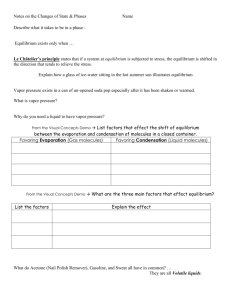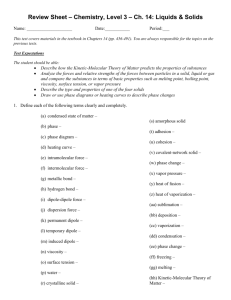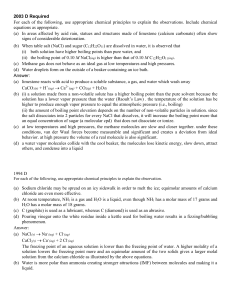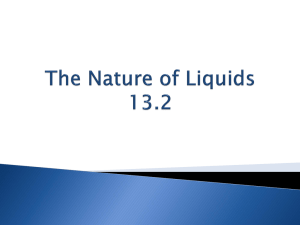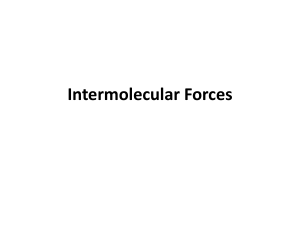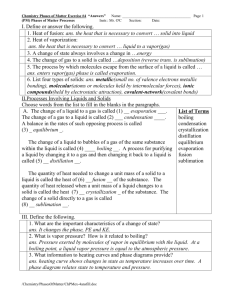Historical burdens on physics 15 Evaporating and boiling
advertisement
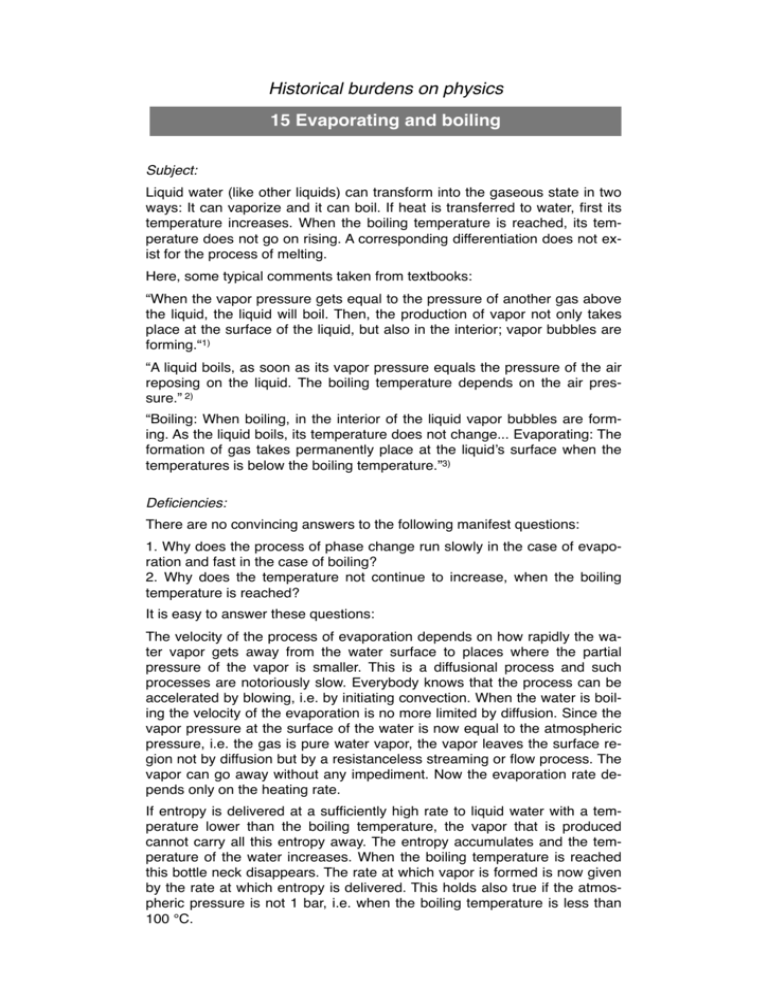
Historical burdens on physics 15 Evaporating and boiling Subject: Liquid water (like other liquids) can transform into the gaseous state in two ways: It can vaporize and it can boil. If heat is transferred to water, first its temperature increases. When the boiling temperature is reached, its temperature does not go on rising. A corresponding differentiation does not exist for the process of melting. Here, some typical comments taken from textbooks: “When the vapor pressure gets equal to the pressure of another gas above the liquid, the liquid will boil. Then, the production of vapor not only takes place at the surface of the liquid, but also in the interior; vapor bubbles are forming.“1) “A liquid boils, as soon as its vapor pressure equals the pressure of the air reposing on the liquid. The boiling temperature depends on the air pressure.” 2) “Boiling: When boiling, in the interior of the liquid vapor bubbles are forming. As the liquid boils, its temperature does not change... Evaporating: The formation of gas takes permanently place at the liquid’s surface when the temperatures is below the boiling temperature.”3) Deficiencies: There are no convincing answers to the following manifest questions: 1. Why does the process of phase change run slowly in the case of evaporation and fast in the case of boiling? 2. Why does the temperature not continue to increase, when the boiling temperature is reached? It is easy to answer these questions: The velocity of the process of evaporation depends on how rapidly the water vapor gets away from the water surface to places where the partial pressure of the vapor is smaller. This is a diffusional process and such processes are notoriously slow. Everybody knows that the process can be accelerated by blowing, i.e. by initiating convection. When the water is boiling the velocity of the evaporation is no more limited by diffusion. Since the vapor pressure at the surface of the water is now equal to the atmospheric pressure, i.e. the gas is pure water vapor, the vapor leaves the surface region not by diffusion but by a resistanceless streaming or flow process. The vapor can go away without any impediment. Now the evaporation rate depends only on the heating rate. If entropy is delivered at a sufficiently high rate to liquid water with a temperature lower than the boiling temperature, the vapor that is produced cannot carry all this entropy away. The entropy accumulates and the temperature of the water increases. When the boiling temperature is reached this bottle neck disappears. The rate at which vapor is formed is now given by the rate at which entropy is delivered. This holds also true if the atmospheric pressure is not 1 bar, i.e. when the boiling temperature is less than 100 °C. The formation of bubbles is eye-catching but it is not necessary for the process of boiling. If the water is heated from above with an IR lamp, boiling begins as soon as the upper surface reaches the boiling temperature, and no bubbles appear. Origin: The eye-catching phenomenon, i.e. the bubbles, seems to obstruct the view on the essential. Disposal: There is no way around considering the partial pressure of the water vapor above the water surface. As long as it is lower than the atmospheric pressure we have evaporation. The water escapes by the slow process of diffusion. When the water is boiling, the vapor above the water surface is pure water vapor. No resistance is opposing its evacuation. One explains the formation of bubbles but not without saying that this a an indication for the boiling process only when the water is heated from below. The explanation is yet easier when using the chemical potential, since both processes – the phase transition and the diffusion process – are driven by a difference of the chemical potential. 1) Gerthsen-Kneser-Vogel, Physik, Springer-Verlag, Berlin, 1977, S. 189. 2) Sexl, Raab, Streeruwitz, Das mechanische Universum, Band I, Verlag Moritz Diesterweg, Frankfurt, 1980, S. 205. 3) Physik, GROSS-BERHAG, Ernst Klett Schulbuchverlag, Stuttgart, 1996, S. 92. Friedrich Herrmann, Karlsruhe Institute of Technology

